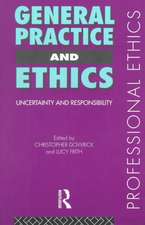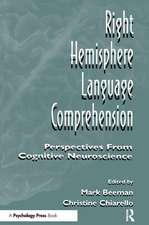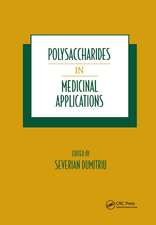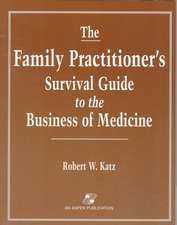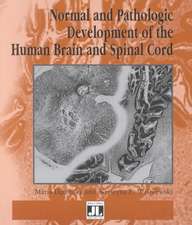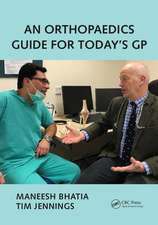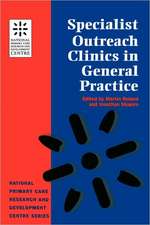The Science of Gymnastics: Advanced Concepts
Editat de Monèm Jemnien Limba Engleză Paperback – 22 ian 2018
The second edition introduces three new sections: applied coaching, motor learning and injury prevention and safety, and features contributions from leading international sport scientists and gymnastics coaches and instructors. With case studies and review questions included in each chapter, the book examines every key aspect of gymnastic training and performance, including:
- physiological assessment
- diet and nutrition
- energetics
- kinetics and kinematics
- spatial orientation and motor control
- career transitions
- mental skills training and perception
- injury assessment and prevention, with clinical cases
- advanced case studies in rotations, vault approach and elastic technologies in gymnastics.
The book represents an important link between scientific theory and performance. As such, The Science of Gymnastics is essential reading for any student, researcher or coach with an interest in gymnastics, and useful applied reading for any student of sport science or sports coaching.
| Toate formatele și edițiile | Preț | Express |
|---|---|---|
| Paperback (1) | 374.28 lei 22-36 zile | +31.99 lei 6-12 zile |
| Taylor & Francis – 22 ian 2018 | 374.28 lei 22-36 zile | +31.99 lei 6-12 zile |
| Hardback (1) | 1121.81 lei 43-57 zile | |
| Taylor & Francis – 31 iul 2018 | 1121.81 lei 43-57 zile |
Preț: 374.28 lei
Nou
Puncte Express: 561
Preț estimativ în valută:
71.64€ • 73.83$ • 60.48£
71.64€ • 73.83$ • 60.48£
Carte disponibilă
Livrare economică 10-24 februarie
Livrare express 25-31 ianuarie pentru 41.98 lei
Preluare comenzi: 021 569.72.76
Specificații
ISBN-13: 9781138701939
ISBN-10: 1138701939
Pagini: 396
Ilustrații: 38 Tables, black and white; 84 Line drawings, black and white; 42 Halftones, black and white; 126 Illustrations, black and white
Dimensiuni: 174 x 246 x 25 mm
Greutate: 0.7 kg
Ediția:2nd edition
Editura: Taylor & Francis
Colecția Routledge
Locul publicării:Oxford, United Kingdom
ISBN-10: 1138701939
Pagini: 396
Ilustrații: 38 Tables, black and white; 84 Line drawings, black and white; 42 Halftones, black and white; 126 Illustrations, black and white
Dimensiuni: 174 x 246 x 25 mm
Greutate: 0.7 kg
Ediția:2nd edition
Editura: Taylor & Francis
Colecția Routledge
Locul publicării:Oxford, United Kingdom
Public țintă
Postgraduate, Professional, and UndergraduateCuprins
PART I: Physiology for Gymnastics Learning Outcomes, Introduction and Objectives. 1. Energetics of Gymnastics 2. Cardiovascular and Respiratory Systems of the Gymnasts 3. Diet, Nutrition, Supplementation and Related Health Issues in Gymnastics Review Questions. PART II: Applied Coaching Sciences in Gymnastics Learning Outcomes, Introduction and Objectives. 4. Fitness Model of High Level Gymnasts 5. Training Principles in Gymnastics 6. Specific Physical and Physiological Assessments of Gymnasts 7. Jumping Skills: Importance, Assessment and Training Review Questions. PART III: Biomechanics for Gymnastics Learning Outcomes, Objectives and Introduction. 8. Linear Kinematics 9. Angular Kinematics 10. Linear Kinetics 11. Angular Kinetics 12. Use of Body Inverse Dynamics to Evaluate Reaction Force During Vault and Floor Somersaults in Artistic Gymnastics Review Questions. PART IV: Psychology for Gymnastics Learning Outcomes, Introduction and Objectives. 13. Task Demands and Career Transitions in Gymnastics: From Novices to Experts and the Stages of Learning Across the Career 14. Coaching and Parenting 15. Mental Skill Development and Variation in Gymnasts 16. Omsat-3 Mental Skills Assessment 17. Closing the Circle of Mental Skills Training: Providing Mental Skills Feedback to Gymnasts 18. Perception of Complex Movements Review Questions. Part V: Interaction between Physiological, Biomechanical and Psychological Aspects of Gymnastic Performance Learning Outcomes, Introduction and Objectives. 19. The Physiologists Point of View 20. The Biomechanists Point of View 21. The Psychologist Point of View Conclusion Review Questions. PART VI: Motor Learning in Gymnastics Learning Outcomes, Introduction and Objectives. 22. Motor Learning Versus Pedagogy 23. Fundamental Concepts and Definitions in Motor Learning 24. Stages of Motor Learning 25. Feedback 26. Transfer of Learning Tasks to a Final Skill 27. Transfer Strategies 28. Practice 29. Special Considerations in Gymnastics Learning 30. Advanced Applied Example of Motor Control 1: The Running Approach When Vaulting 31. Advanced Applied Example of Motor Control 2: Rotations and Twisting in Gymnastics, Is There a Universal Rotational Scheme? 32. Advanced Applied Example of Motor Control 3: The Impact of Elastic Technologies on Artistic Gymnastics – A Special Case Study From Brazil Review Questions. PART VII: Injuries in Gymnastics Learning Outcomes, Introduction and Objectives. 33. Injury is a Serious Issue 34. What is an Injury? 35. Characteristics of Gymnastics Injuries 36. Injury Location 37. Injury Countermeasures 38. Clinical Injury Cases in Artistic Gymnastics, the Big and the Small Ones 39. Monitoring Gymnasts for Injury Prevention Review Questions
Notă biografică
Monèm Jemni PhD is currently a tutor and a consultant at the University of Cambridge UK. He developed the first ever curriculum in sport science in the history of the University, launched at the Institute of Continuing Education. He is also a visiting Professor at Ningbo University, China after occupying several senior positions in France, in Qatar and in the UK. With a history as a gymnast and international coach who contributed to Olympic medal winners, he is now one of the pillars at the FIG Coaching Academy. His cross expertise in exercise science for health and performance has led him to win outstanding awards from several countries and enjoys world-leading reputation thanks to his cutting-edge research and investigations.
Descriere
This edition offers three new sections: applied coaching, motor learning and injury prevention. It includes case studies and review questions, and features contributions from leading international sport scientists and gymnastics coaches and instructors.

